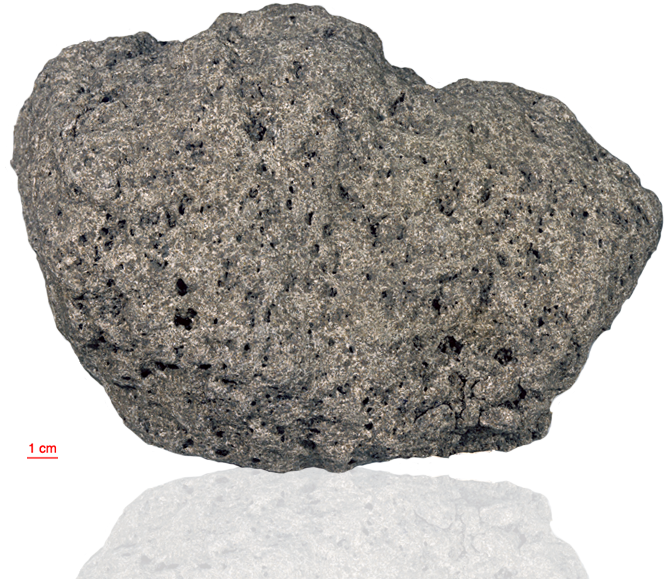
Fact sheet
70035 is a vesicular, medium–grained, hypidiomorphic, granular high-Ti basalt with large anhedral clinopyoxene enclosing armalcolite, ilmenite, ulvöspinel and chrome spinel. The ilmenite content approaches 20%. Interstitial plagioclase encloses ilmenite and olivine. The groundmass includes cristobalite, K-feldspar, tranquillityite, ilmenite, ulvöspinel, troilite and pale brown granitic glass.
Our thin section consists of phenocrysts of olivine and ilmenite in a groundmass of fan-shaped intergrowths of plagioclase and pyroxene.
The sample weighed 5765 grams before analysis and is 3.82±0.06 billion years old (Rb/Sr).
Further details of this and other Apollo samples are here: http://curator.jsc.nasa.gov/lunar/
The thin section is slightly thick so between crossed polars some plagioclase crystals are yellow instead of shades of grey. It has also been used for laser analysis and the pits produced appear as black circles.
Apollo 17, the final manned landing mission, had two objectives: to obtain samples of ancient rocks from the lunar highlands and to look for evidence of younger volcanic activity on the valley floor.
This small Collection contains material deriving from both periods, including igneous rocks around 4.3 billion years old from the lunar highlands as well as younger volcanic samples dating from about 3.6 billion years ago.
Apollo 17 was launched on 7 December 1972.






